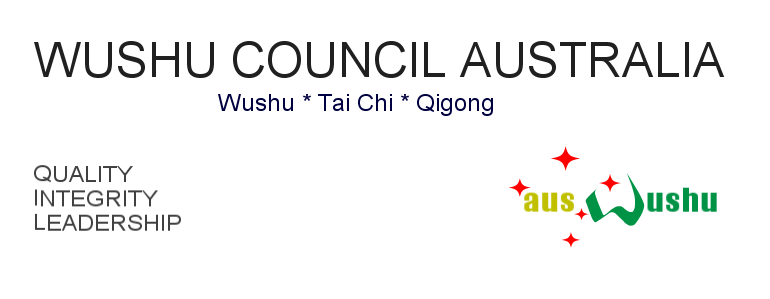The discipline of “Wushu” which literally means “martial arts,” is deeply rooted in Chinese culture and grew out of complex system of physical training, hundreds of years of military experience, traditional Chinese medicine, religious and philosophical doctrines of Taoism and Buddhism.
Now the ancient art of Wushu is being practised by millions of people of various ages and cultures in all its forms such as Tai Chi (Taijiquan), Traditional and Modern (Competitive) Wushu, Qigong (Chi Kung), Baguazhang (Bagua), Xing Yi (Hsing-I), Weapons Play (Sword, Broadsword, Sabre, Cudgel, Spear etc) and many others.
As a centuries-old sport, Wushu that evolved from strengthening exercises for martial artists, is extremely rich in content and varies in form. There are scores of movements and hundreds and thousands of routines, each composed of movements – kicks and punches, crouches and dodges, leaps and turns – that are arranged in set patters. Regular practice produces beneficial effects not only on muscles and bones, but also on the nervous, respiratory and cardio-vascular systems. That is why Wushu is widely recommended as an effective means of keeping fit and treating chronic diseases.
Very often, Wushu practice, particularly Tai Chi, goes hand-in-hand with Qigong that is the art and science of using breathing, posture, movement and/or sound to cleanse, refine, accumulate and circulate energy in the body, it is recognised as a method of improving health and fitness. Benefits include better resistance to disease, preventing imbalances and dysfunctions and development of a clear, tranquil state of mind that helps to reduce stress.
The concept of Wushu is different from the one that appeared in the West in 60’s. Every Chinese martial art was called Kung Fu implying “hand-to-hand fighting.” However, the Chinese equivalent of ‘kung’ is “energy” and ‘fu’ is ‘‘time.” Any kind of activity requiring professional skills and time such as cooking, painting, teaching music, etc. can be regarded then as ‘Kung Fu.’ Today’s Kung Fu schools are usually business enterprises focussing on self-defence and teaching mixed martial arts including kick-boxing. There is a number of international Kung Fu federations that promote it although Kung Fu is not recognised as sport in the Olympic sense as it is not structured for competitions. Some of the old traditional schools that appeared in the West after their masters left mainland China because of the Cultural Revolution of 1949 have chosen to use “Kung Fu” term although their styles belong to the traditional Wushu. Martial arts movies have also added to the confusion.
Today’s Wushu is practised as recreational and cultural activity, strengthening health exercises, internal and spiritual cultivation and sport from the amateur to the elite and professional level. As such it is recognised by the International Olympic Committee.
As a competitive sport, Wushu is displayed in
- Taolu – standardised or self-created complex routines – that can be performed solo or with a partner; and
- Sanshou (Sanda) – sparring.
There are four kinds of world championships for Wushu organised every two years and supported by the International Wushu Federation, a member of the IOC:
World Wushu championships (for the elite level, includes eleven selected disciplines of Wushu: bare-hand routines, weapons, and sparring);
World Junior Wushu Championships (the same as for adults);
World Traditional Wushu Championships (open to all practitioners of all ages, with emphasis on traditional styles); and
World Sanshou Championships.
Wushu therefore is an “umbrella” term encompassing sport and traditional Wushu with their routines and sparring. It also can be divided into internal and external arts with the emphasis on the developing of internal energy and muscular power respectively. Internal arts would include Tai Chi, Xing Yi, Bagua, Baji, Liu Ho Ba Fa; and external arts range from the most famous Shaolin style to the styles imitating real and mythical animals. Both internal and external arts have weapons play and sparring, however, it is up to the individual school what they teach and where they limit themselves. Very often, schools offer both aspects to train in: “hard” and “soft” or external and internal or combination of them.

